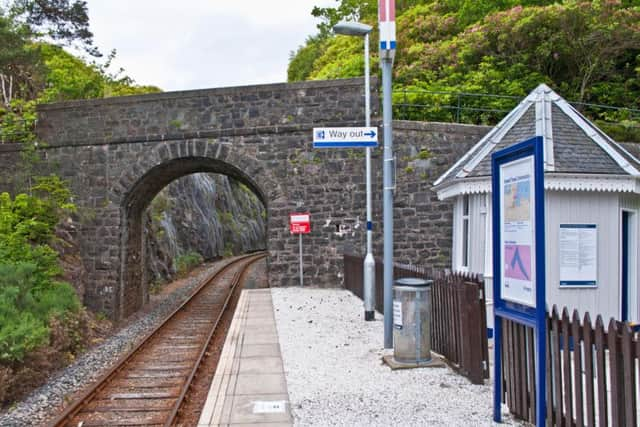Waving down trains at Scotland's stations to end to keep trains on time
Passengers will no longer have to flag down trains at “request” stops under novel plans to make services run more punctually. The practice would be replaced by a new “press-and-ride” system.
Travellers would instead push a button on the platform, which would flash up a message to the driver on a screen in the train cab to stop at the station.
Advertisement
Hide AdAdvertisement
Hide AdDrivers have to slow down as they approach such stations under existing practices in case there is a passenger waiting to get on.


However, this often means needless braking and time lost when the platform turns out to be empty.
The system is due to be trialed on the Far North Line between Inverness, Thurso and Wick this autumn.
The route, whose request stops include Dunrobin Castle and Invershin, has a record of poor punctuality compared to other rural lines.
These regular overruns are partly because the route is largely single track with few passing loops, which can compound delays as trains try to get past each other.
However, if successful the device could also used on other lines with request stops such as between Glasgow and Oban, and Inverness and Kyle of Lochalsh.
The innovation is also viewed as more user friendly for foreign tourists. The press-and-ride system would be accompanied by multi-lingual information electronic screens at stations, which would confirm the request to stop had been made.
ScotRail managing director Alex Hynes said: “There will be trials in the autumn on a request stop system, which will provide real-time information to the driver.
Advertisement
Hide AdAdvertisement
Hide Ad“Once we have demonstrated a viable solution we will find the money and roll it out.
“It’s about preserving the wonderful quirkiness of the Victorian railway while speeding up the operation.”
Mr Hynes said there were also plans for more frequent trains on the Far North Line between Inverness and Dingwall and Invergordon.
He said “express” services were also planned over the full length of the line.
However, these would require extra spending on new and extended passing loops, and there was no current timescale for the improvements. Frank Roach, partnership manager of the Highlands and Islands Transport Partnership co-ordinating body, said speeding up trains through request stops meant they were more likely to be on time at passing loops to meet oncoming trains, which would avoid delays.
He said he got the idea from the practice a century ago of passengers pulling a lever to activate old-style “semaphore” signals to alert drivers to stop at a station.
The plans, which were announced at the annual meeting of the Friends of the Far North Line in Thurso, were welcomed by the campaign group.
Convener Ian Budd said: “We are very pleased this new method of request stop notification is being developed.
“It will provide for a smoother operation and reduce wasted time on the Far North Line.
“It is good example of a small improvement, which will make a big difference.”